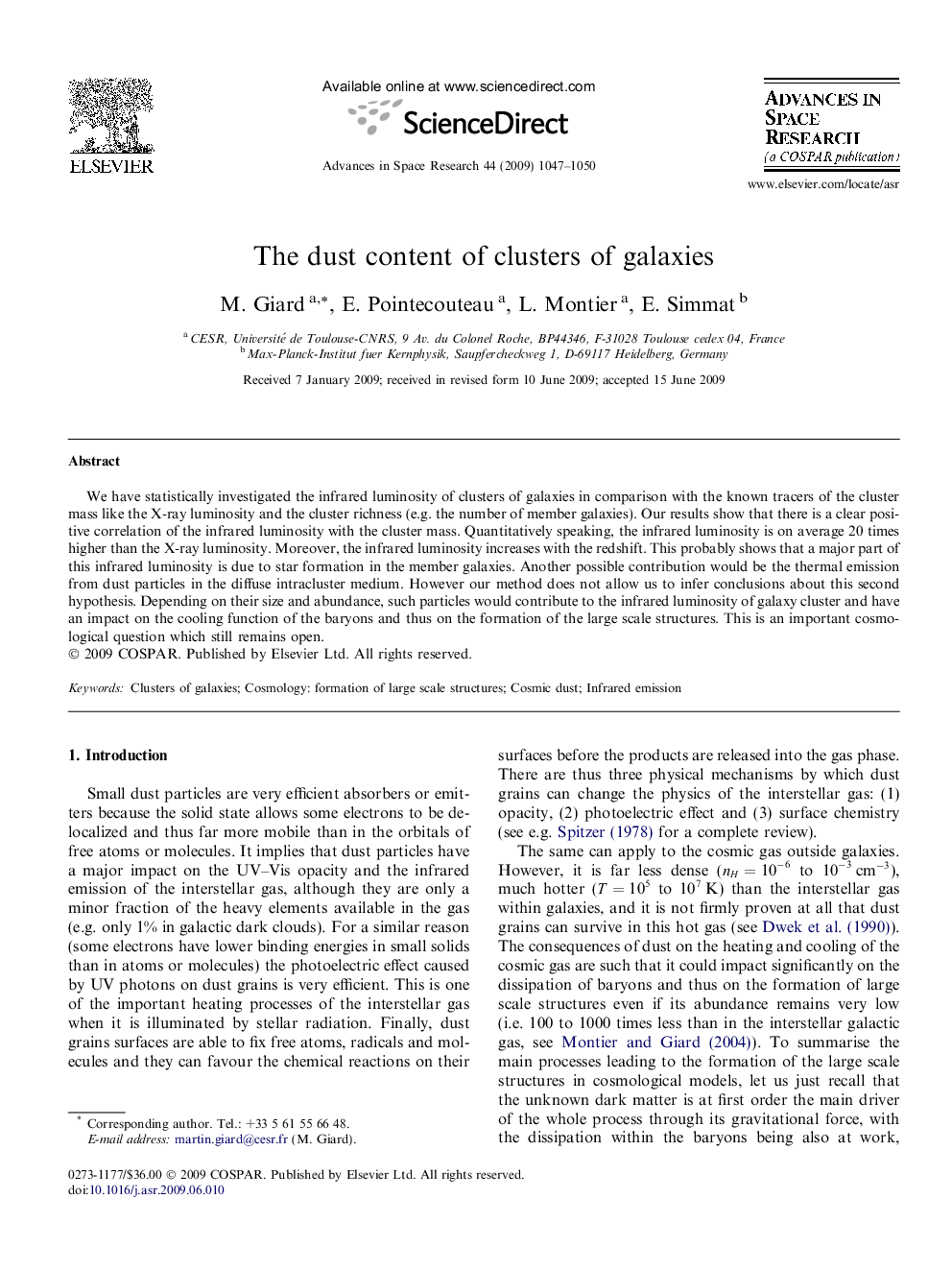| Article ID | Journal | Published Year | Pages | File Type |
|---|---|---|---|---|
| 1766570 | Advances in Space Research | 2009 | 4 Pages |
Abstract
We have statistically investigated the infrared luminosity of clusters of galaxies in comparison with the known tracers of the cluster mass like the X-ray luminosity and the cluster richness (e.g. the number of member galaxies). Our results show that there is a clear positive correlation of the infrared luminosity with the cluster mass. Quantitatively speaking, the infrared luminosity is on average 20 times higher than the X-ray luminosity. Moreover, the infrared luminosity increases with the redshift. This probably shows that a major part of this infrared luminosity is due to star formation in the member galaxies. Another possible contribution would be the thermal emission from dust particles in the diffuse intracluster medium. However our method does not allow us to infer conclusions about this second hypothesis. Depending on their size and abundance, such particles would contribute to the infrared luminosity of galaxy cluster and have an impact on the cooling function of the baryons and thus on the formation of the large scale structures. This is an important cosmological question which still remains open.
Related Topics
Physical Sciences and Engineering
Earth and Planetary Sciences
Space and Planetary Science
Authors
M. Giard, E. Pointecouteau, L. Montier, E. Simmat,
